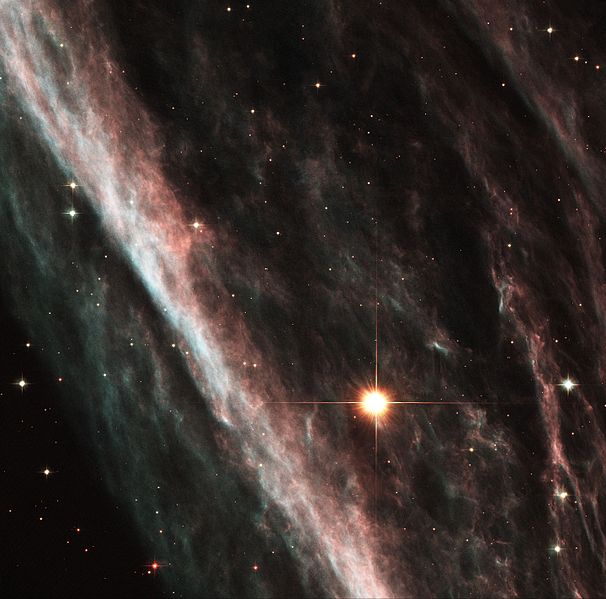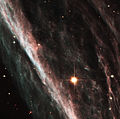Fichier:Pencil hst big.jpg

Gréisst vun dëser Duerstellung: 606 × 599 Pixel. Aner Opléisungen: 243 × 240 Pixel | 485 × 480 Pixel | 777 × 768 Pixel | 1.036 × 1.024 Pixel | 2.071 × 2.048 Pixel | 3.289 × 3.252 Pixel.
Original Fichier (3.289 × 3.252 Pixel, Fichiersgréisst: 10,13 MB, MIME-Typ: image/jpeg)
Versiounen
Klickt op e bestëmmten Zäitpunkt fir déi respektiv Versioun vum Fichier ze kucken.
| Versioun vum | Miniaturbild | Dimensiounen | Benotzer | Bemierkung | |
|---|---|---|---|---|---|
| aktuell | 23:38, 18. Sep. 2006 |  | 3.289 × 3.252 (10,13 MB) | WilliamKF | {{Information| |Description=From the NASA press release: :Remnants from a star that exploded thousands of years ago created a celestial abstract portrait, as captured in this NASA Hubble Space Telescope image of the Pencil Nebula. :Officially known as N |
Benotze vu Fichieren
Dës Säit benotzt dëse Fichier:
Globaalt Benotze vum Fichier
Dës aner Wikie benotzen dëse Fichier:
- Benotzt op ar.wikipedia.org
- Benotzt op ast.wikipedia.org
- Benotzt op az.wikipedia.org
- Benotzt op be.wikipedia.org
- Benotzt op cs.wikipedia.org
- Benotzt op de.wikipedia.org
- Benotzt op en.wikipedia.org
- Benotzt op en.wikiquote.org
- Benotzt op eo.wikipedia.org
- Benotzt op es.wikipedia.org
- Benotzt op fr.wikipedia.org
- Benotzt op hr.wikipedia.org
- Benotzt op hu.wikipedia.org
- Benotzt op it.wikipedia.org
- Benotzt op kk.wikipedia.org
- Benotzt op ko.wikipedia.org
- Benotzt op mk.wikipedia.org
- Benotzt op pl.wikipedia.org
- Benotzt op pt.wikipedia.org
- Benotzt op ro.wikipedia.org
- Benotzt op ru.wikipedia.org
- Benotzt op sk.wikipedia.org
- Benotzt op sr.wikipedia.org
- Benotzt op sv.wikipedia.org
- Benotzt op tr.wikipedia.org
- Benotzt op tr.wikiquote.org
- Benotzt op uk.wikipedia.org
- Benotzt op uz.wikipedia.org
- Benotzt op vi.wikipedia.org
- Benotzt op zh.wikipedia.org

